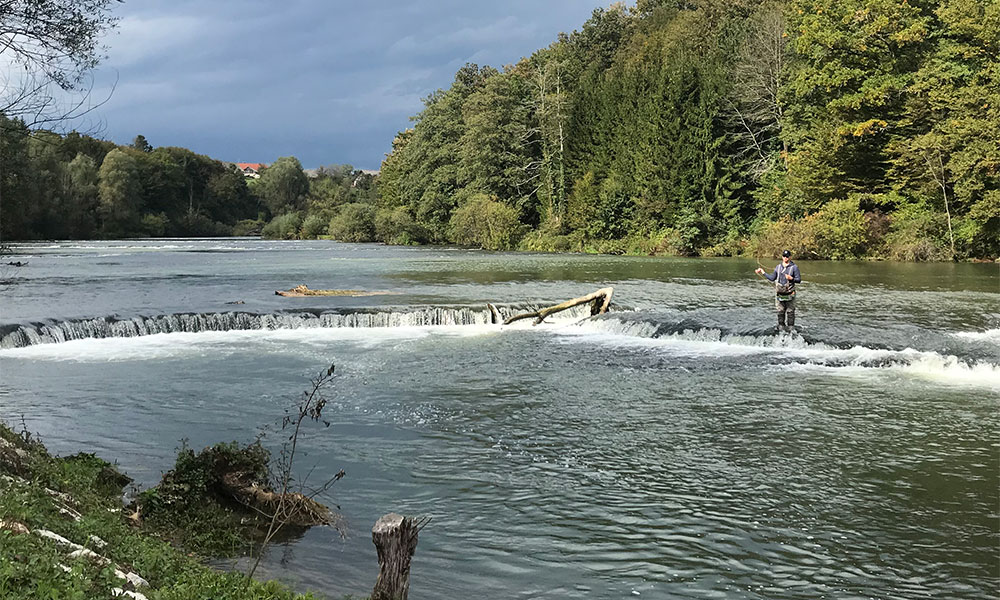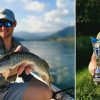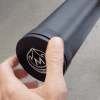There’s a long list of ‘need-to-know’s when it comes to fishing successfully for the celebrated King of European rivers, the hucho hucho or Danube salmon. For instance – they don’t eat daily, so be prepared for a fishing trip of stealth, patience and endurance (and make sure it’s at least a couple of days long).
In Slovenia, there is a good population of hucho hucho due to extremely successful hatcheries and research programs, as our Ambassadors Team Tie & Fly discuss in their latest blog.
Team Tie & Fly | March 2021
Hucho hucho or Danube salmon is the biggest freshwater salmonid of Central and East Europe as well as the Balkans. It is closely related to the Siberian Taimen. Hucho live in the River Danube and its tributaries. They can be found in higher numbers in rivers in Slovenia, Austria, Germany, Croatia, Bosnia, Serbia, Montenegro, Slovakia. We are happy that we have a very good population here in Slovenia.
The Fisheries Research Institute of Slovenia runs a Danube salmon research program. They mark fish that are introduced into our rivers with tags and later on observe fish migration and growth.
We’ve caught fish that have travelled near 40 kilometers upstream from where they were put into the river. Some of them were caught more than just once which also shows that catch and release (when done right) doesn’t kill fish.
The biggest one recorded was introduced into the Sava River:
- On release in 2010 it measured 57cm
- Caught in 2017 it measured 110cm
- Caught again in 2020 it measured 116cm.
We also have a hatchery farm. Annually we introduce one year old fish into the Sava River.
Most of the other clubs prefer older fish that are also bigger and believed to have better survival rate but are therefore easily spotted as farmed hucho, with damaged fins, etc. We never keep adult fish in the farm but always catch them directly at spawning grounds and immediately return them back into the river.
To actually obtain the eggs, a female fish has to be wiped with a wet cloth which doesn’t seem to leave consequences to them since they all live to spawn next year again. Hucho start spawning at the age of 6 years when they are about 70cm long and then spawn every year throughout their lifetime. They live up to 20 years and can grow well over 130cm and weigh over 30kg.
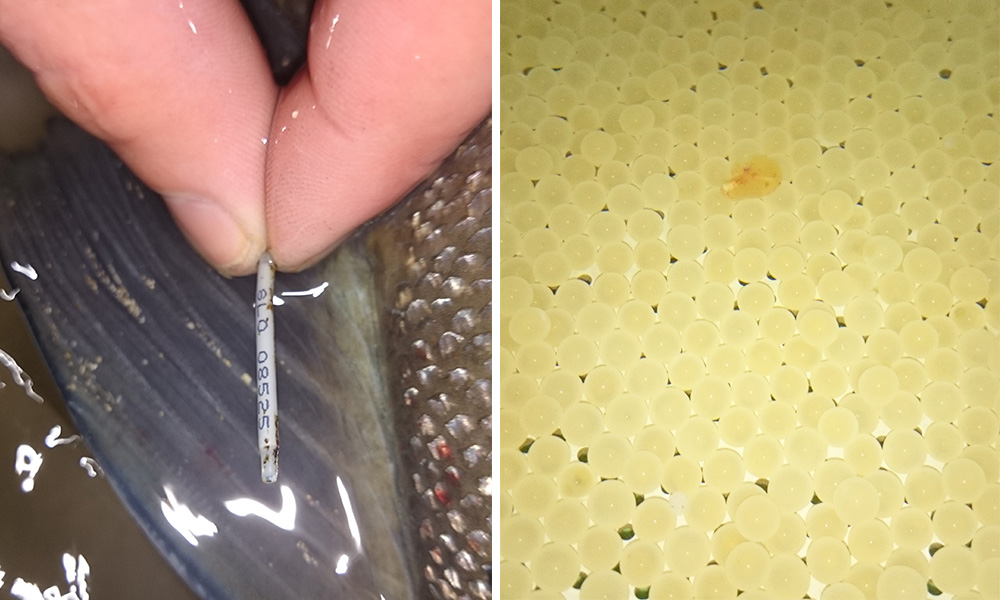
In winter, when the temperatures are below zero, fish handling is really important. They must be kept wet, as every contact with dry surfaces or snow can significantly damage protective layers. It is still possible to land them in shallow water but never put them on dry land.
When it comes to equipment, we’re using single hand CTS Affinity X and Maven Mission fly rods in rod weights from 9 to 12, depending on the water level. For bigger rivers we also use double hand rods. We prefer heavier rods because the strike/hook up ratio is fairly low and with a strong rod it is much easier to set the hook. Plus, the weight of the fish could be a problem in stronger currents.
Most hucho won’t fight really hard but some do. For fishing bigger rivers or high water levels you need to have enough backing capacity because they can run downstream using their weight – we’ve had fish run for almost 100m. We’ve also seen many locals either fly fishing or spinning getting spooled out and losing fish due to poor equipment. Snapped lines often lead to dead fish, that goes especially for spin fishermen that use treble hooks which are sadly still allowed.
We use using sink tip fly lines – anything is good as long as it gets your fly deep enough. Streamers are the flies of choice! Any material would do, but we prefer synthetics because they dry out faster and are therefore easier to cast. But natural materials work very good as well.
Fishing season in Slovenia extends from 1st of October until 14th of February so that means low temperatures and freezing conditions. The first and most important part of your gear should be warm winter clothes. In some of the Balkans countries such as Bosnia the season starts earlier, that is with June. Summer fishing can be fun as well but it is mostly done in late evenings.
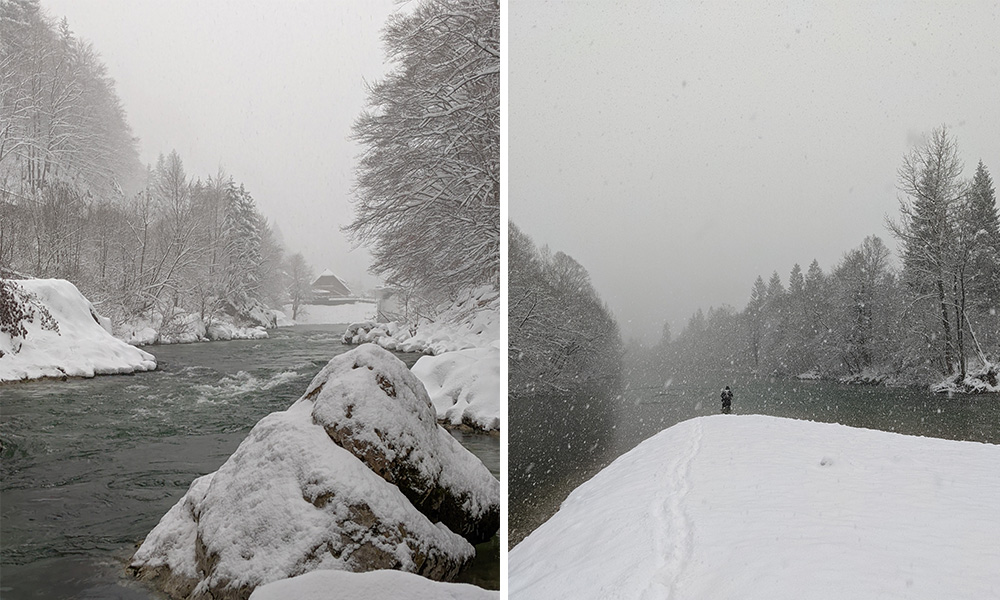
One of the most important factors is water level. We all prefer gin clear rivers and sight fishing but that is something you will rarely experience with hucho. They are very careful and can be spooked well before you spot them.
The perfect opportunity to catch one is when the water level is slightly elevated and murky. In low water levels the best moments would be dawn and dusk, as many hucho are caught in the dark.
Sudden weather changes will improve your chances as well. It is important to know that adult hucho do not eat on a daily basis but rather once per week or even two weeks so it is important to plan your fishing trip to be at least a couple of days long. And you have to be prepared to go home without a hero shot of yourself holding a hucho – especially one over 1m long.
In Austria we’ve had a problem with otters in the last couple of years. They attack and harm even the biggest of hucho even though they can not actually kill them. There has also been an outbreak of black dot disease in some parts of Slovenia. River dams are among the biggest threats, as they impact the hucho population severely.
This season our biggest hucho was 126cm long, caught on a CTS Affinity X 10wt. Interestingly, we’ve caught a particular hucho 3 times in 5 years and it has only grown 4cm so not all of them reach crazy lengths!
